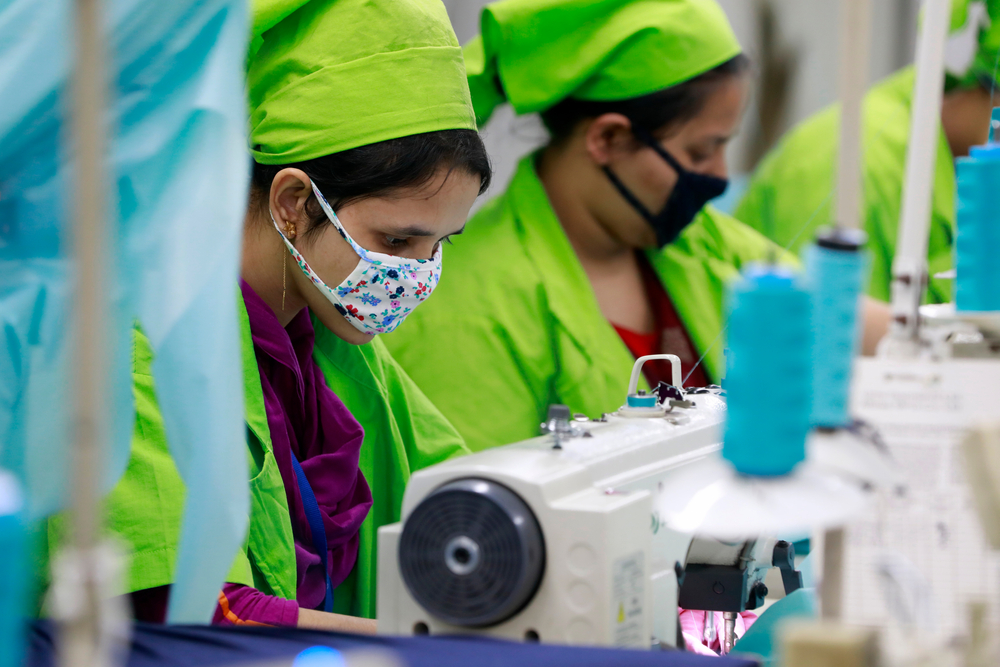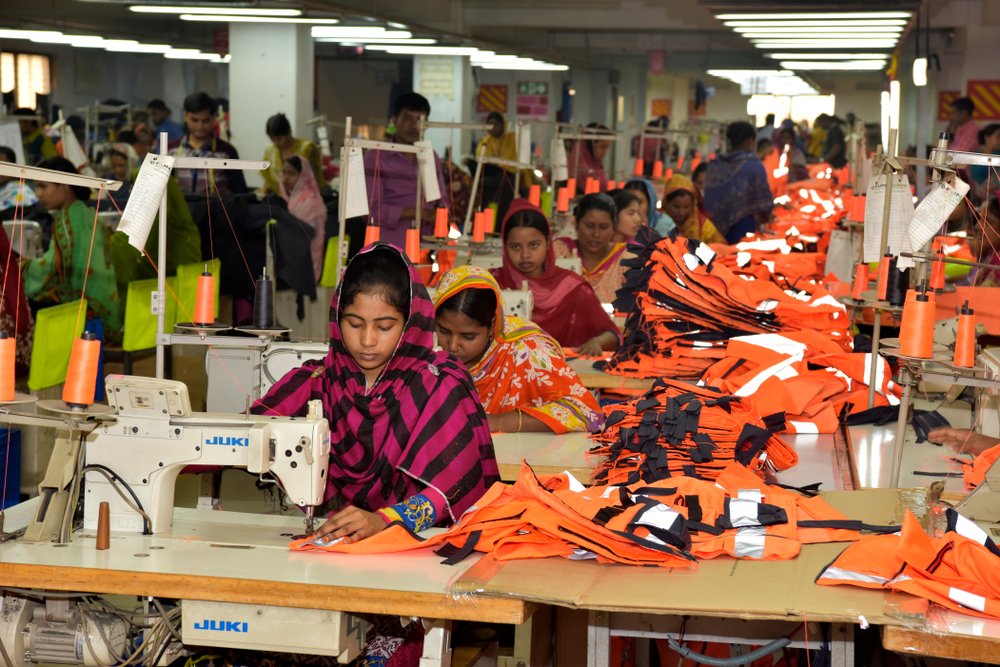Bangladesh Tops the Charts in Garment Exports, Particularly Lingerie: A Case Study



Skilled and cheap labour has made Bangladesh the number one destination for sourcing garments. With its garment industry thriving year after year, its clothing has been hailed by people far and wide. However, selling the clothes locally did not provide much of a boost to Bangladesh in the past. The diaspora settled in the developed nations worldwide came to their rescue by providing the industry giants with the know-how to set up a market overseas. Garment exports boomed as a result, and there was no looking back.
It is time to look at some of the impressive statistics now. The small-sized country has achieved a miracle, with its revenue taking a huge leap upward. $19 billion soon touched the $34 billion mark, i.e., a whopping 79% increase in sales via exports. Bangladesh soon became the second-largest garment exporter across the world, with 80% of its revenue coming from the sale of garments. All other industries took a back seat. Bangladesh was content to rest on its laurels, especially when the bigger countries began to look at it with a newfound admiration and a tinge of envy.
Reasons behind the spectacular feat
Well, the boom in clothing export seemed to occur almost overnight. Two garment factories were burnt to the ground following a devastating accident in 2012 & 2013. Bangladesh did not waste time lamenting the loss of 10 lives, however. Instead, the workers vowed to turn things around, and they did so eventually.
The government also took notice of the appalling conditions of the garment factories and took a few important decisions. Improved safety conditions were implemented soon afterwards, and labour regulations were revamped completely. This was a new beginning for the garment industry in Bangladesh. Its workers are now proud of being a part of this industry that has been recognised throughout the world.
International companies flocked to Bangladesh when it began mass production and offered fashionable garments at low rates. Many of the international brands set up manufacturing hubs in the capital of Bangladesh, thus ushering in a new dawn for the populace. Not all international companies could follow the same path, though. Many of them are now actively looking for local suppliers who are willing to provide the right garments without altering the specifications.
Importance of lingerie sales
Apart from formal and casual clothing, it is the lingerie market that has grabbed attention worldwide of late. Inner wear for women enjoys a prominent space in the garment industry, especially in the USA and UK. It has a share of 4% of all clothing products that are sold by retail companies. While the figure does not seem impressive at first glance, it is interesting to note that the sale of lingerie is expected to touch $78.66 billion within the next 5 years. It stands to reason that even a mere 4% of the market share can be translated into a substantial amount, making both local sales and exports lucrative.
The change and growth of the lingerie market have startled the bigger companies too. A positive shift had been noted post the pandemic when online sales became the norm. Women across the world were more comfortable buying lingerie from the privacy of their homes versus visiting a physical store and making discreet inquiries. Women are now more interested in comfort than moving with the current trend, especially when it concerns inner wear.
The silhouettes depicting soft cups are in focus at present, sending manufacturers into overdrive to create as many products as possible. Desperate times call for desperate measures, and most big brands now resort to having their lingerie stitched and designed by workers located in third world countries. A variety of hitherto unusual shades have gained popularity, too, with the consumers asking for inclusivity when it comes to size.
Inner wear trends

Kim Kardashian popularised shape wear that excited the streetwear models along with exclusive lingerie. White and black still run strong, but the nude or natural hue has been grabbing attention all over the world now. While the mainstay of such inner wear is its unique design and comfort factor, most of the products are created by hand in Bangladeshi homes. Packaging them expertly is done by exporters who happen to be the local retail companies noted for selling quality apparel. Assorted items of lingerie are shipped to Western brands every day, with profits being ensured for the local companies. The garment industry of the USA and the UK simply adds the brand labels owning them in the process.
What sells & what does not!
- The apparel industry has been quick to understand the demand and made provisions to cater to it. Top companies are increasingly sourcing sports bras and bralettes that have reported 9% and 4% additional sales, respectively.
- Push-up bras have seen a steady decline, however. The year-over-year (YOY) statistics reveal a 25% drop in sales. This has made many of the top companies stop stocking such items completely.
- Diversity rules right now! Dark and nude shades are in demand irrespective of the state and county the end-user belongs to. The US has seen a spurt of sales of skin tone underwear that has succeeded in upping the sales by 56% in comparison to last year’s sale figures of 44%. It is the lighter shade or beige colour that has become the rage across the UK, however.
- Size matters greatly when one has to promote and sell lingerie. Apart from the small, medium, and large, XL is reckoned to be the new standard for women now. Moreover, the retailers and dealers are eager to include fringe sizes, including 2XS, XXL, and even 3XLs. It is not surprising to note that the range of XS to XL sells briskly as before, but the availability of more sizes makes the customer favour a particular company today.
- Lingerie or underwear remains a women’s choice predominantly, with men’s underwear taking a backseat as before.
- Many branded companies are eager to import recycled bras and have them in stock to cater to women hoping for sustainable items. Some of them can be labelled as 100% recycled, with either the entire product or a majority of its components being recycled to eliminate wastage and environmental pollution.
Bangladesh’s footprint in lingerie export
The nation does not pick and choose, and its workers in the garment industry are willing to satisfy the demand of Western brands. Yes! China still rules the global export market by supplying briefs, camisoles, vests, bras, panties as well as corsets. However, China has seen its exports suffer both across the EU and US on account of inflation and rising prices. The labour costs of Chinese products have been high for the last few years, causing concern to Western users. The best solution for the market has been found in Bangladesh, where labour is incredibly cheap even today.
Garment exports of Bangladesh have reported a growth both in terms of quality and quantity and have been successful in pleasing Western companies greatly. The US has upped its lingerie imports by 17% recently, and Bangladesh has been one of the top contributors in this aspect.
Admittedly, China remains the leader, but Bangladesh has emerged as a force that cannot be ignored. The surge of popularity for Bangladesh’s lingerie has made Tesco, a leading UK-based retailer, move to Bangladesh instead of sourcing its lingerie from China. Furthermore, there have been many other companies entering into the lingerie market at present. The existing companies have seen competition from other brands that want a foothold in this burgeoning market as well.
It is quite apparent that Bangladesh has been slowly replacing China as the favoured clothing export partner of the USA, especially in the lingerie section. Bangladesh had already been exporting lingerie regularly to the top American retailers, including Target, Walmart, Kmart, JCPenney, and others. However, it has recently begun supplying the products to Victoria’s Secret, Tesco, and H&M, thus entering the European Union with a vengeance.
Uni Group happens to be one of the prominent hubs of lingerie manufacturing in Bangladesh today. However, another unit was set up by the Chittagong-based Clifton Group quite recently. Both the manufacturing facilities fulfil up to 55% of the lingerie products that are ordered by developed countries regularly.
Growth path of Bangladesh as the leading exporter of lingerie

Bangladeshi companies started by manufacturing vests, panties, and briefs initially. 1995 saw the first bra being manufactured, and Bangladesh has not looked back since. Exports increased further when a 30-year-old business based in Indonesia established a bra manufacturing facility in Bangladesh, enhancing the reputation of the nation as an affordable exporter that does not compromise on quality.
The high commitment and fulfilment of orders made Bangladesh an excellent sourcing location for global companies dealing in lingerie. The mainstay of Bangladesh as a lingerie exporter has been to create ordinary, everyday wear bras and other items with no frills at all. Orders for all fancy lingerie still go to China, but Bangladesh has made its mark in the export of lingerie.
Ready to launch your collection but unsure about your supplier or how you source your materials? Connect with Fashinza today to find solutions!



















